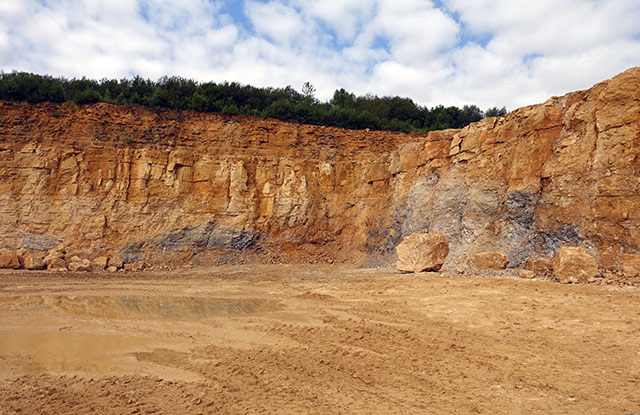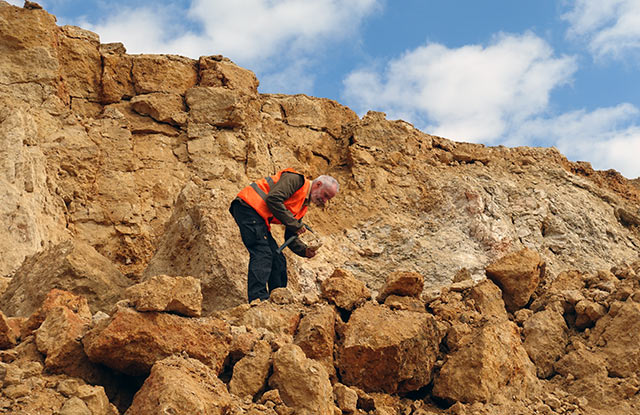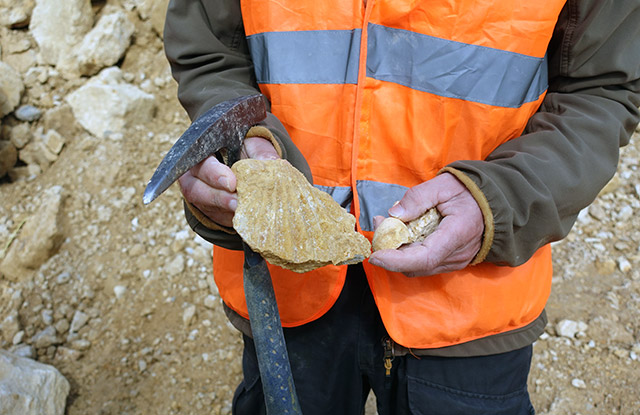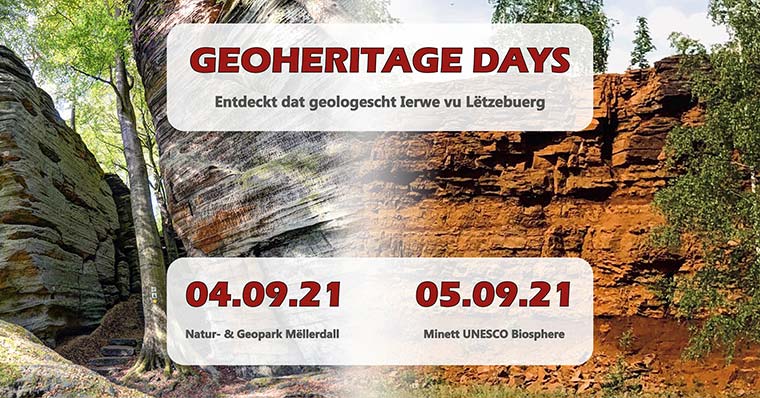On Saturday 4 and Sunday 5 September, the Natur- & Geopark Mëllerdall and the Minett UNESCO Biosphere will organise the first edition of the “Geoheritage Days”.
The aim is to highlight the protected geological heritage or heritage worthy of protection in these two regions. Thus, a greater notoriety will be created for this unique heritage in both regions, unique in Luxembourg and beyond the country’s borders. The events in the Mullerthal take place on Saturday, those in the Minett UNESCO Biosphere are scheduled on Sunday.
On Sunday afternoon we offer you a visit that is not possible every day. We invite you to discover the Cimalux quarry, which is partly located in the municipality of Rumelange, partly in the French border municipality of Ottange.

This quarry, where work will continue until at least 2035, is usually not open to visitors. It is, however, a place where, especially after shots fired in the course of quarrying, spectacular fossils can be found.
For this visit, proposed by the Minett UNESCO Biosphere in collaboration with the “National Museum of Natural History” and the “Friends of Geology, Mineralogy and Palaeontology of Luxembourg“, the quarry managers nevertheless make an exception to the ban on visits.

The tour will start on Sunday 5 September at 2 pm at the Musée National des Mines in Rumelange, which will provide you with a helmet. This, as well as a protective waistcoat, identical to the ones you must have in your car, is necessary to be able to access the quarry.
The visit will be led by Professor Bernard Lathuilière. Bernard Lathuilière is a professor at the University of Lorraine in Nancy. His field of study is research on the palaeontology and palaeoecology of corals from the Jurassic period, which he analyses worldwide. This is a relatively unexplored group of organisms, but one that can provide many new insights into this era’s world.

Since 2014, he has implemented the ORAGE project (Observatoire Géologique Régional de Lorraine), a participatory science project for anyone wishing to explore this common geological heritage. It is a project which, like the Rumelange quarry, extends beyond the borders of Lorraine.
During this two-hour visit, Professor Lathuilière will give a series of explanations on the different habitats that are visible at the quarry’s working face. He will explain the different geological periods from which the rocks of the Rumelange quarry originate and will surely make one or other participant of the visit want to become a future fossil collector.



By clicking on this link, you can immediately register for the 5th of September. Just bring solid shoes and a safety waistcoat. A safety helmet will be available at the National Mining Museum. And if you want to get a taste of this visit, watch the RTL feature on their Summermagazin of August the 10th.




